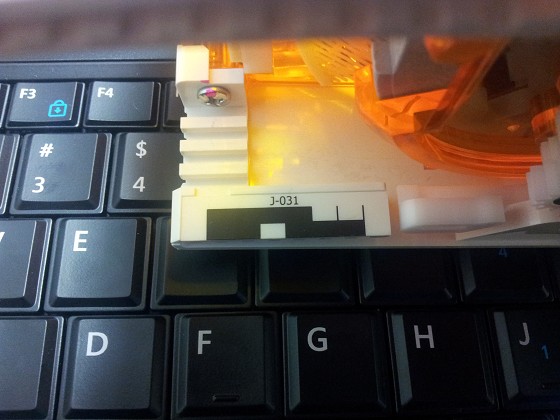|
|
Recursion: See recursion.
--
“It is important not to let the perfect become the enemy of the good, even when you can agree on what perfect is. Doubly so when you can't. As unpleasant as it is to be trapped by past mistakes, you can't make any progress by being afraid of your own shadow during design.”
--Greg Hudson, Subversion developer
kenkeniff: It definitely reads the number; I suspect it may do this magnetically rather than optically.
Oblivian: My bets on positioning assist too.
Using notches to count where the end is
kenkeniff:Oblivian: My bets on positioning assist too.
Using notches to count where the end is
It's not, read the above.
It's attached to an application that displays the number of the cartridge inserted.
I'm trying to figure out how to change the number of the cartridge by printing a new barcode or magnetic strip thing.
Oblivian: Does it actually read J143 out anywhere or just get familiar with the type/colour/shape of what it is.
Since its not clear and we have no reference to a 2nd version of the same, you could also sumise that the reader is a dark/light function. And if a limited number of them are in the device at once may be as simple as the different cuts assign an ID of 1-8 or a combination of them based on areas blocked out.
IE orange = ID3, black = ID6 regardless of the displayed number presented with different gaps

You can never have enough Volvos!
wellygary: What does the device (the one the cartidge goes into) actually do?
Niel: 16 bits give you 64k different numbers, not 256. Do you have more examples or only the two? You could try making a random code and see what happens.
|
|
